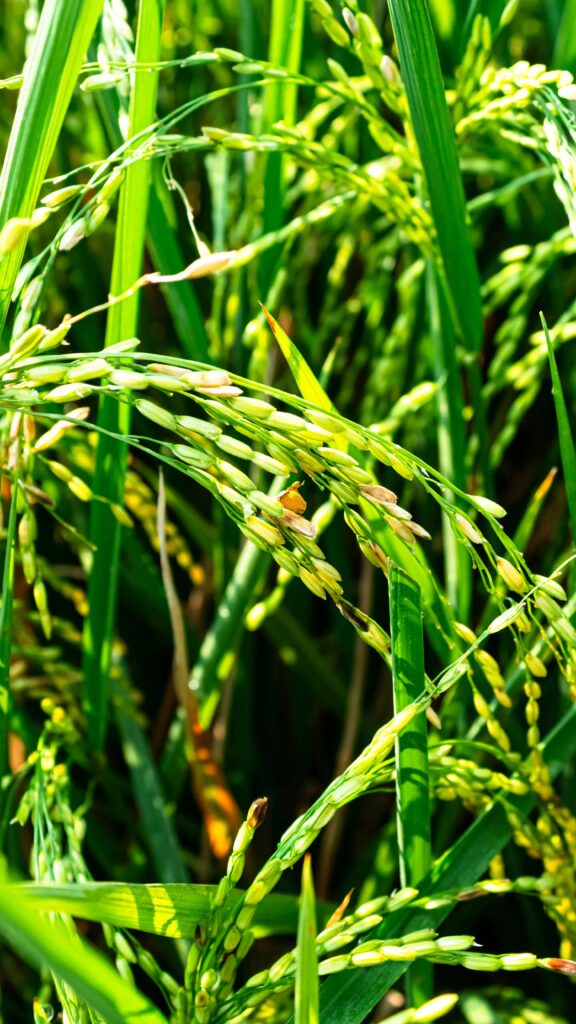Climate Change Risk Assessment
Climate change, characterized by sustained alterations in temperature and weather patterns, has significantly evolved, impacting agricultural production worldwide. GH2 has conducted this study to analyze the impacts of various climate change risks and parameters on the Project and supply chain. This study, set over a 25-year project life, uses two reference frameworks: Representative Concentration Pathways (RCPs) RCP 4.5 (intermediate) and RCP 8.5 (worst-case) and the Equator Principles.
Climate risks are broadly divided into two categories: physical risks and transition risks. Physical risks covered in the study are floods, cyclones, earthquakes, and heat wave which are further classified as acute or chronic. Acute climate risks refer to sudden and severe climate-related events with immediate significant impacts while chronic risks refer to long-term, ongoing hazards resulting from changes in the Earth’s climate patterns.
In the study, flood risks are analyzed from two perspectives: riverine and flash floods. According to the PDMA Sindh report, the project area is not at risk for riverine floods but is prone to floods from heavy rainfall and embankment breaches. Flooding may also potentially impact access to the supply chain by affecting the road network connecting the project site to the wider area where paddy is sourced from. However, this risk is manageable due to the well-developed road infrastructure around the project site which is backed by two major highways i.e. Sindh Coastal Highway and Gharo – Keti Bunder Highway. These highways are heavily trafficked and have not been affected during major floods in the past. Moreover, the site is also accessible through a network of local roads, ensuring a stable access to paddy around the project site.

Cyclones pose a very low risk to Gharo, with projections indicating a very low risk of cyclones over the next 25 years. The Sindh Hazard Risk Atlas report shows that Gharo lies in a safe zone with low susceptibility to earthquakes. However, the area near the GH2 project site in Gharo faces a medium to high risk of heatwaves, with return periods of 5 and 25 years.
GH2 Industries (Pvt.) Ltd. has been recommended to design civil structures with plinth levels 500mm above the Natural Ground Level (NGL) to mitigate heavy precipitation risks. Moreover, to address earthquake risks, GH2 should design its civil structures in compliance with PGA values of Earthquake Hazard Zone 2A. Additionally, GH2 should also monitor weather alert advisories from governmental agencies for early forecasts to mitigate heatwave risks. It is also suggested to increase vegetation and provide rest areas with drinking and bathing facilities for workers.
Chronic risks are gradual and persistent involving factors greenhouse gas emissions, rising global temperatures, and other climate-related parameters. Projections from PDMA indicate that most areas in Thatta district have a low to medium risk of drought over 5 and 25 years, while Badin district has a low risk over the same periods. According to the Climate Impact Explorer, under the RCP 4.5 scenario, Sindh province is expected to experience a temperature increase of 1.6°C by 2050, and under the RCP 8.5 scenario, a rise of 2.1°C. GH2 needs to ensure that buildings have adequate ventilation to cope with these high temperatures.
Transition risks are policy and legal, technology, market and reputation risks. Transition risks can occur when moving towards a less polluting, greener economy. As GH2 is already designed on an eco-friendly model with net negative carbon emissions, it falls below that threshold where transition risks arise and in fact may benefit as global shift towards low-carbon economy accelerates.

GH2 Industries project primarily relies on rice cultivation as its primary source of raw materials. Pakistan is the only major rice-producing country where rice itself is not a staple crop. In Pakistan, Punjab and Sindh play pivotal roles, contributing 90% of the nation’s rice production. The rice yield in Sindh province is higher than Punjab over the years due to production of non-basmati i.e., IRRI and other varieties which are more resilient to climate change impacts. It is important to note that despite a reduction in rice supply caused by flooding events, the local availability of rice rebounded in subsequent years.
The Climate Impact Explorer findings suggest a projected reduction in rice yield of up to 2.5% in the Sindh region by 2050 under the moderate scenario (RCP 4.5). Conversely, in the worst-case scenario (RCP 8.5), an estimated decline of 2.8% is anticipated. It is important to note that these reductions fall within a relatively modest range. It is important to consider that GH2 Industries’ share in rice consumption will represent approximately 2% of Pakistan’s overall rice production, which means the company will face a negligible impact due to reduction in rice yield in Pakistan.
GH2 is recommended to work with paddy farmers to incorporate climate-smart agriculture extension services in its supply chain. GH2 will collaborate with farmers in adopting heat-resistant and drought- tolerant seed varieties to sustain rice yield and work with NGOs to facilitate access to agronomic practices, credit, and quality inputs.
